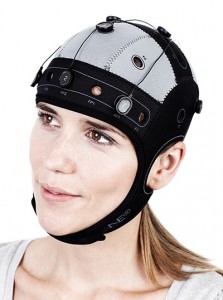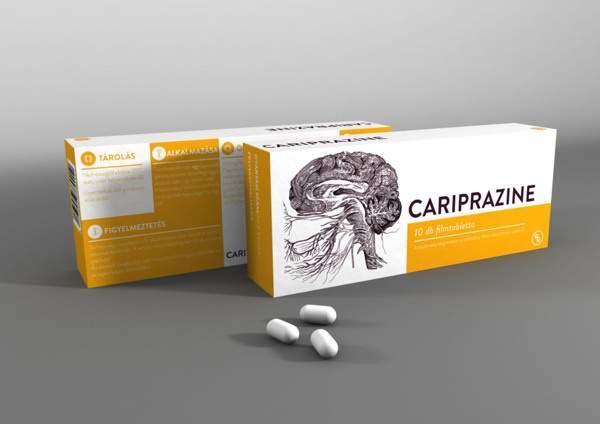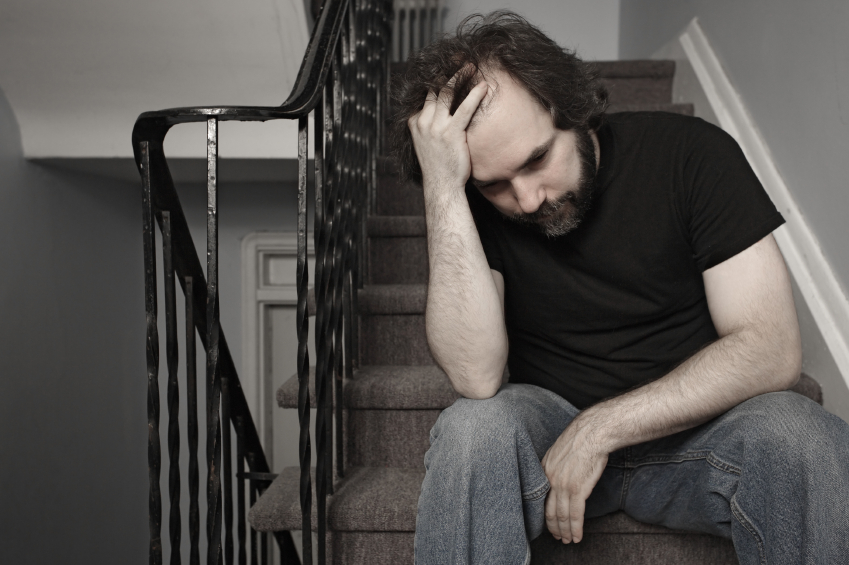Lithium and Quetiapine Have Similar Efficacy in Bipolar Disorder
In a recent study comparing the efficacy of lithium and the second-generation antipsychotic quetiapine, the drugs had remarkably similar results. Researcher Andrew Nierenberg et al. presented the results at the 2014 meeting of the American Society of Clinical Psychopharmacology. In the 6-month study called CHOICE (Clinical Health Outcome Initiative Comparative Effectiveness), 482 patients received either lithium or quetiapine in addition to other medications in a manner consistent with clinical practice. For the purposes of the study, those receiving lithium could not receive quetiapine or another antipsychotic, and those receiving quetiapine could not receive lithium or another antipsychotic, but both groups could receive other types of adjunctive medications.
By the end of the 6-month study period, most patients had improved substantially, but only about a quarter of each group became truly well. The researchers suggest that patients may need a longer period of treatment or other interventions such as psychotherapy or combination treatment. Clinicians were told to use the maximum dose of lithium or quetiapine that each patient could tolerate. Mean maximum doses were 1007.5mg of lithium and 344.9mg of quetiapine.
One surprise for the researchers was that 24% of lithium patients and 27% of quetiapine patients required no other medications and improved on monotherapy.
While results were very similar for two drugs, lithium produced slightly greater side effects and produced slightly better results in patients with anxiety. This may have been due to those patients also receiving benzodiazepines, and the researchers are analyzing data to see whether the patients with anxiety did indeed receive this kind of adjunctive treatment. Quetiapine was slightly better in patients who had more manic symptoms.
In another surprise finding, patients with bipolar II disorder fared better overall than patients with bipolar I disorder. Patients with higher suicide risk did worse than those with lower suicide risk.
Traditional Antidepressants Are Not Effective in Bipolar Depression
 Bipolar illness affects 4.5% of the US population. According to researcher Kathleen Merikangas, 1.0% have bipolar I disorder, 1.1% have bipolar II disorder, and the remainder have subthreshold symptoms. Mark Frye, Chairman of the Department of Psychiatry at the Mayo Clinic, gave a lecture on antidepressants in bipolar illness at the 2014 meeting of the American Psychiatric Association.
Bipolar illness affects 4.5% of the US population. According to researcher Kathleen Merikangas, 1.0% have bipolar I disorder, 1.1% have bipolar II disorder, and the remainder have subthreshold symptoms. Mark Frye, Chairman of the Department of Psychiatry at the Mayo Clinic, gave a lecture on antidepressants in bipolar illness at the 2014 meeting of the American Psychiatric Association.
The newest data from meta-analyses indicate that traditional antidepressants that are effective in unipolar depression are not effective in bipolar depression. Some patient groups, especially those with very early onset depression and mixed depression, are at increased risk of switching into mania and making a suicide attempt while taking antidepressants.
Unipolar depressed patients with a genetic variation that produces a short form of the serotonin transporter (5HT-LPRs/s) are at increased risk for depression in adulthood following a history of childhood adversity, and tend to respond less well to antidepressants. Frye found that 5HT-LPRs/s is weakly associated with switching into mania when antidepressants are given to patients with bipolar depression.
At the same symposium, researcher Mike Gitlin reviewed data on combination therapy, which is rapidly becoming the norm, indicating that in most circumstances, it is superior to monotherapy.
Researcher David Miklowitz reviewed the impressive data on the superiority of most forms of targeted psychotherapy or psychoeducation compared to treatment as usual for bipolar depression. He noted his own finding that Family Focused Therapy (FFT) not only is effective in adolescents and adults with bipolar disorder, but also in reducing illness and dysfunction in those with prodromal disorders (such as depression, cyclothymia, and bipolar not otherwise specified) in situations where there is a family history of bipolar disorder.
Eight components of FFT are:
- Recognition of prodromal symptoms and development of treatment strategies for them.
- Recognition and management of stress and triggers using cognitive restructuring.
- Development of a relapse prevention plan and rehearsal of what to do.
- Regularization of sleep.
- Encouragement of treatment adherence with an eye to a good future.
- Enhancement of emotional self-regulation skills, including cognitive restructuring.
- Improvement of family relationships and communication.
- Education about substance abuse avoidance and treatment for that and other comorbidities.
Many of these are also key components of group psychoeducation, cognitive-behavioral therapy, and interpersonal and social rhythms therapy, and all of these are effective in treating and preventing bipolar depression compared to treatment as usual. It is noteworthy that in the research of Francesc Colom, 90% of patients randomized to treatment as usual relapsed within 24 months, while psychoeducation was highly effective in preventing relapses over the next five years.
This editor (Robert M. Post), the discussant for the symposium, emphasized that the main take-away messages of the speakers were: use more lithium, use more caution and fewer antidepressants in treating bipolar depression, use more combination therapy for acute illness and for maintenance, and definitely use more psychotherapy. Read more
TDCS Promising for a Range of Illnesses
 Transcranial direct current stimulation (tDCS) shows promise for a range of problems. In new research presented at the 2014 meeting of the Society of Biological Psychiatry, it was reported to be effective for improving cognition in bipolar disorder, alleviating depression, and reducing hallucinations.
Transcranial direct current stimulation (tDCS) shows promise for a range of problems. In new research presented at the 2014 meeting of the Society of Biological Psychiatry, it was reported to be effective for improving cognition in bipolar disorder, alleviating depression, and reducing hallucinations.
How TDCS Works
At the meeting, researcher Marom Bikson discussed tDCS technology. The treatment can be delivered with a 12-volt battery. The anode directs current inward and is excitatory, while the cathode directs current outward and is inhibitory. The dendrites at the top of neurons under the anode are hyperpolarized by the tDCS, leading to relative depolarization of the cell soma, thus increasing excitation. TDCS, unlike repetitive transcranial magnetic stimulation (rTMS), which causes cells to fire, is only neuromodulatory, inducing minor changes in membrane polarization.
TDCS Improved Cognition in Bipolar Disorder
At the 2014 meeting of the American Psychiatric Association, Roberto Delle Chiaie et al. reported that two mA tDCS for 20 minutes for 15 days (anode over the left prefrontal cortex and cathode over the right cerebellum) improved immediate and delayed recall, trail making with a pointer, and motor coordination in 17 euthymic bipolar patients. This very promising result deserves further study and replication.
Antidepressant Effects of TDCS
At the 2014 meeting of the Society of Biological Psychiatry, Collen Loo reported that tDCS had positive effects in depressed patients compared to sham treatment. This complements a 2013 article by Brunoni et al. in JAMA Psychiatry that tDCS plus the selective serotonin reuptake inhibitor (SSRI) antidepressant sertraline (Zoloft) was more effective than either treatment alone.
TDCS for Treatment-Resistant Hallucinations
Jerome Brunelin et al. reported at the meeting that tDCS had positive effects in patients with schizophrenia who had hallucinations that resisted treatment. The positive electrode (anode) was placed over the left prefrontal cortex and the negative electrode (cathode) over the left temperoparietal area, where hallucinations are thought to originate. Stimulation was at two mA for 20 minutes, five days per week for two weeks. Effects lasted as long as 30 days and were associated with reduced functional connectivity of these brain regions.
Low frequency (1Hz) rTMS, which decreases neural activity, also improves refractory hallucinations when applied over the temperoparietal area, which is important for language. Placing the cathode over this area in tDCS is also inhibitory, so comparisons of rTMS with tDCS for suppressing hallucinations would be of great interest and importance.
New Drug Cariprazine Has Anti-Manic Effects
Cariprazine is a new antipsychotic drug from Hungarian company Gedeon Richter. It functions as a dopamine D3 and D2 partial agonist. The drug has shown significant antimanic effects in three placebo-controlled studies. At the 2014 meeting of the American Psychiatric Association, researcher Robert E. Litman presented findings that 32% of patients with moderate to severe mania improved to a point of minimal or no illness while taking cariprazine, versus 22% who improved similarly while taking placebo. Doses in the studies Litman presented ranged from 3mg/day to 12mg/day.
At the same meeting, researcher Lakshmi N. Yatham discussed cariprazine tolerability. At a mean dose of 7.44mg/day, side effects of cariprazine compared to placebo included akathisia (restless legs) in 20% of patients compared to 5%, extrapyramidal side effects (irregularities in movement) in 13% of patients compared to 5%, vomiting in 9% of patients compared to 4%, and restlessness in 6% of patients compared to 2%. Twelve percent of patients discontinued treatment due to side effects while taking cariprazine, compared to 7% taking placebo. Weight increased by an average of 0.54kg among patients taking cariprazine compared to an average of 0.17kg among those taking placebo. Yatham and colleagues concluded that cariprazine treatment is generally safe and well-tolerated.
It is expected that data on the positive effects of cariprazine in bipolar depression in two placebo-controlled studies will soon be published.
Also at the meeting, researcher Nika Adham et al. reported that in animal studies, cariprazine had greater affinity for the dopamine D3 receptor than aripiprazole (Abilify), another partial agonist at D2 and D3 receptors. D3 receptors are important for the regulation of cognition and mood. It is expected that cariprazine might eventually be useful in the treatment of schizophrenia.
Psychotherapy More Effective Than Collaborative Care in Bipolar Depression with Anxiety Disorder Comorbidity
The Systematic Treatment Enhancement Program for Bipolar Disorder (STEP-BD), a long-term study of treatments for bipolar disorder, recently found that psychotherapy was more effective than their normal collaborative care model (consisting of regular illness evaluation and treatment) for patients with bipolar disorder and a current or lifetime presence of an anxiety disorder.
An anxiety disorder comorbidity is consistently associated with a poor outcome in patients with bipolar disorder. In a 2014 article by Deckersbach et al. in the American Journal of Psychiatry, the STEP-BD research group reported that the effect of psychotherapy was particularly strong in those with comorbid post-traumatic stress disorder (PTSD) or generalized anxiety disorder.
While antidepressants are typically used to treat anxiety disorders in unipolar depression, this has not been proven effective in bipolar disorder. Not only do patients with bipolar disorder tend to respond poorly to antidepressants, but in research collected by this editor Robert Post and colleagues in the Bipolar Collaborative Network, patients with bipolar disorder who had an anxiety disorder fared even more poorly on antidepressants as adjuncts to mood stabilizers than those with bipolar disorder without an accompanying anxiety disorder.
The poor response to antidepressants in bipolar depression in general, and particularly in those with a comorbid anxiety disorder, together with the finding that psychotherapy is highly effective, suggest that adjunctive psychotherapy is a more appropriate choice for patients with bipolar depression and a comorbid anxiety disorder.
The choice of the best pharmacological treatment of this comorbid anxiety disorder deserves specific comparative study. Candidates would include the mood stabilizing anticonvulsants valproate, lamotrigine, and carbamazepine; the atypical antipsychotics with efficacy in bipolar depression (quetiapine, lurasidone, and olanzapine combined with fluoxetine); and those used as an adjunct in unipolar depression (quetiapine again and aripiprazole).
Childhood Onset of Bipolar Illness More Difficult than Adolescent and Adult Onset
Research on early-onset bipolar disorder sometimes lumps childhood-onset in with adolescent onset. Researcher Terence Ketter et al. explored differences in illness among 502 patients at the Stanford Bipolar Disorder Clinic. The 107 patients with childhood onsets (before age 13) had a more difficult course of illness in almost all domains compared to the 238 patients with adolescent onsets (age 13–18) or the 157 patients with illness onset in adulthood (after age 18).
Considered separately, both patients with childhood-onset illness and patients with adolescent-onset illness had more comorbid anxiety disorders, alcohol use disorders, eating disorders, prior suicide attempts, rapid cycling in the prior year, and at least five mood episodes over the course of their lifetimes than those patients whose illness began in adulthood. Patients whose illness began in childhood had higher rates of each of these unfavorable illness characteristics and were more likely to have a first-degree relative with a mood disorder.
These data mirror those from the Bipolar Collaborative Network in which this editor (Robert Post) is an investigator, and the larger STEP-BD network led by Perlis et al. All three suggest that in the US, two-thirds of the bipolar disorder seen in adults begins in childhood and adolescence, with about a quarter beginning before age 13.
Ketter suggests that research should not combine childhood and adolescent onset illnesses, which come with different rates of anxiety, alcohol, and eating disorder comorbidity, rapid cycling, and prior episodes. The statistical relevance of some findings can be diluted when the two groups are combined.
Editor’s Note: However, the primary message is that childhood onset bipolar disorder is a more severe version of the illness that deserves greater attention, treatment, and research so that its course can be made more benign. It is a problem that there are no Federal Drug Administration–approved treatments for children under 10 years of age with bipolar disorder.
Maternal Flu Infection Increases Fetus’ Risk of Bipolar Disorder with Psychotic Features
 A 2014 study by Sarah E. Canetta et al. in the American Journal of Psychiatry suggests that children whose mothers had influenza during pregnancy are at higher risk for bipolar disorder with psychotic features. The same researchers had previously found that maternal influenza during pregnancy increased a child’s risk of developing schizophrenia, suggesting that there is a link between maternal influenza and psychotic symptoms in the offspring.
A 2014 study by Sarah E. Canetta et al. in the American Journal of Psychiatry suggests that children whose mothers had influenza during pregnancy are at higher risk for bipolar disorder with psychotic features. The same researchers had previously found that maternal influenza during pregnancy increased a child’s risk of developing schizophrenia, suggesting that there is a link between maternal influenza and psychotic symptoms in the offspring.
In the current study, influenza infections were identified by measuring levels of flu antibodies in blood. In a previous study, participants were considered to have influenza if they had been diagnosed clinically. Possibly due to this difference, that study showed a link between maternal flu infections and bipolar disorder in general (not just psychotic cases).
Psychoeducation and Medication Better for Depression than Medication Alone
There is mounting evidence that medication alone is not enough to bring about full remission in bipolar disorder. At the 2014 meeting of the International Society for Bipolar Disorders, researcher T.A. Batista et al. presented evidence that psychoeducation combined with medication may be more helpful than medication alone. In the research team’s randomized controlled study of 30 patients with bipolar I or bipolar II disorder, eight weekly home visits that included both pharmacotherapy and psychoeducation produced more favorable results than eight weekly visits with pharmacotherapy alone. Those patients who received psychoeducation had reduced depression scores and increased medication adherence compared to the others.
Editor’s Note: There are now about a dozen controlled studies indicating the efficacy of psychoeducation. It is time that systematic delivery of psychoeducation, either in a private practice setting, a clinic, or the home environment, become a mandatory part of the treatment of bipolar disorder.
Researchers Vieta and Colom of Barcelona have some of the best positive longitudinal data on psychoeducation versus treatment as usual and find benefits lasting five years or more. Key components of psychoeducation include learning about disease course and medications, developing a careful monitoring system, and recognition of early signs and symptoms of an impending manic or depressive episode, and key drug treatment maneuvers that could be instituted should such early warning signs develop.
High Impulsivity and Low Resilience Characterize Euthymic Patients with Bipolar Disorder
Resilience is the ability to cope with adversity. While its role in anxiety disorder, post-traumatic stress disorder (PTSD), and unipolar depression has been investigated, there have been few studies of resilience in bipolar disorder.
A recent study presented by B. Cha et al. at the 2014 meeting of the International Society for Bipolar Disorders found that even euthymic patients with bipolar disorder show low levels of resilience (as rated on the Connor-Davidson Resilience Scale). Patients with a history of prior bipolar episodes had greater impulsivity (measured on the Barratt Impulsion Scale) and lower resilience than participants in a control group. Impulsivity in bipolar disorder was associated with lower resilience. Higher Clinical Global Impressions (CGI) scores, greater number of prior depressive episodes, and more impulsiveness were associated with lower resilience scores.
Both high impulsiveness and low resilience may be trait-related phenomena even in patients who have recovered from bipolar disorder. Number of prior depressive episodes is also associated with more cognitive impairment on multiple tests of executive functioning, attention, learning, and memory. Therapy aimed at problem solving and coping skills might help build resilience.
Patients with Bipolar Disorder More Creative; Creativity Associated with Worse Functional Connectivity of Brain Regions
 While bipolar disorder can be a devastating illness, multiple studies indicate it is also associated with high levels of creativity. Researchers T. Su and Y. Kuan compared highly creative and normally creative patients with bipolar disorder to healthy controls with either normal or high creativity in the hopes of clarifying some characteristics of creativity in bipolar disorder. At the 2014 meeting of the International Society for Bipolar Disorders, the researchers reported finding greater creativity in patients with bipolar disorder compared to normal controls, and that high creativity was associated with altered functional connectivity of two regions of the brain: the medial prefrontal cortex and the striatum.
While bipolar disorder can be a devastating illness, multiple studies indicate it is also associated with high levels of creativity. Researchers T. Su and Y. Kuan compared highly creative and normally creative patients with bipolar disorder to healthy controls with either normal or high creativity in the hopes of clarifying some characteristics of creativity in bipolar disorder. At the 2014 meeting of the International Society for Bipolar Disorders, the researchers reported finding greater creativity in patients with bipolar disorder compared to normal controls, and that high creativity was associated with altered functional connectivity of two regions of the brain: the medial prefrontal cortex and the striatum.
The researchers hope to contribute to treatment solutions that can help patients with bipolar disorder reduce their emotional disturbance without losing their more positive cognitive functions like creativity.
Editor’s Note: Benson et al. found that compared to normal controls, bipolar patients had more positive hyperconnectivity of many brain regions using positron emission tomography (PET) scans with fludeoxyglucose to measure brain activity. Su and Kuan used functional magnetic resonance imaging (fMRI) and found less connectivity of these two regions. How these differences relate to bipolar disorder and its links to creativity remain to be further studied.







